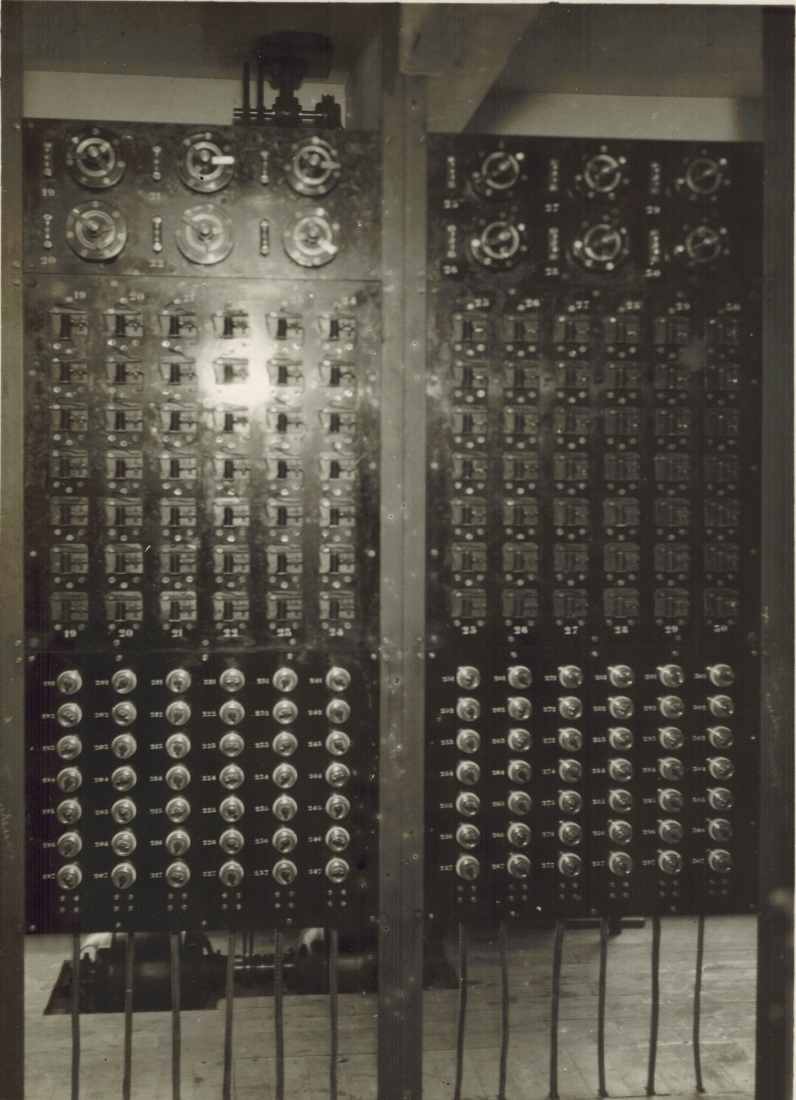This technology history page contains a photograph which is one of several belonging to the photo gallery pages which are part of several pages relating to the invention of the world's first automatic totalizator in 1913 and Automatic Totalisators Limited, the company founded to develop, manufacture and export these systems.
Longchamps Scanner Racks

Click on the image to go back to the Photo Gallery
The photographer's stamp on this photo reads: Jacques BOYER 5bis, Rue Saint-Paul PARIS-IV
Scanners/Time Division Multiplexers and other equipment
This image shows two of the Longchamps Scanner Racks. This system was installed in 1928. The writing on the back of the photo reads Distributors and Relays. Scanners or Distributors are synonymous names attributed to the circular devices at the top of the racks with an inner unbroken ring and a studded concentric outer ring and arms radiating from the centre. In opearation the arms rotate, electrically connecting the unbroken ring to the studs in sequence. These devices are time division multiplexers long before the invention of digital electronics that made this a common concept. These devices send enabling pulses to the Ticket Issuing Machines which are attached to the studs and if the selected TIM has a transaction pending a transaction cycle begins recording the transaction and printing a ticket. Each scanner is connected to a single solenoid in a particular adder selected by the TIM. The adders are visible in the first photograph in the Longchamps section of the photo gallery. As there are seven studs on each scanner, with a TIM attached to each one, seven TIMS are scanned by each scanner. Hence each solenoid in the adder causes the transactions from a group of seven machines to be summed by the solenoid's associated escapement wheel.
With 273 TIMs Longchamps would have had to have at least 7 of these racks.
Below the scanners are overlap relays which hold the transaction cycle voltage until the end of the transaction cycle after the arm has passed the stud. Below the relays are isolation switches used to disconnect a faulty ticket issuing machine from its associated scanner.

